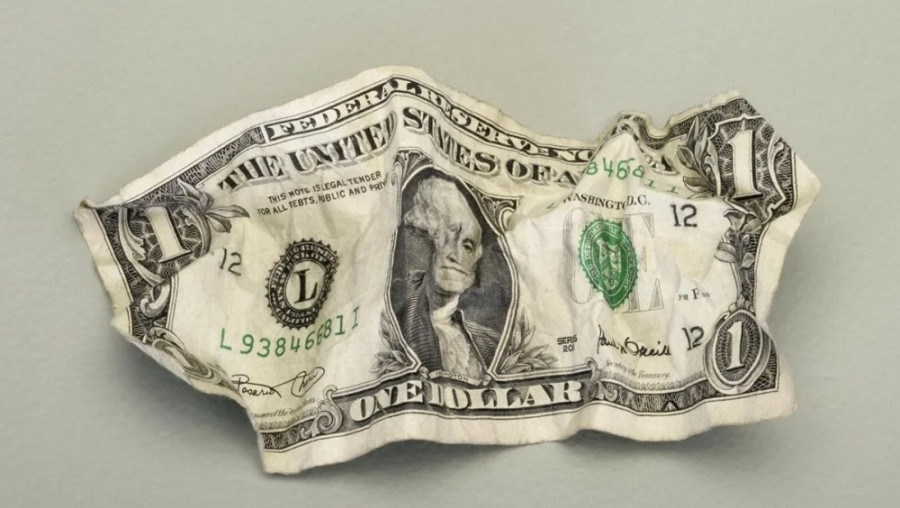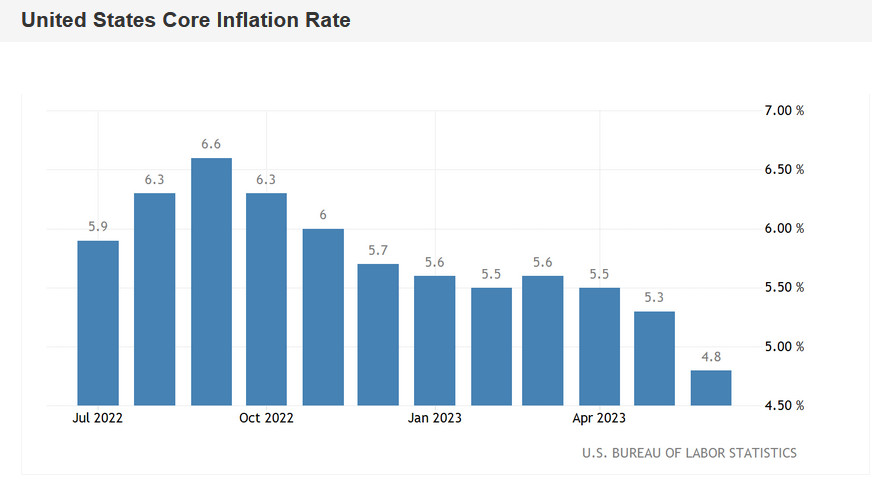
The EUR/USD pair rose over 250 pips last week, reflecting the US dollar's weakness and the euro's firm strength. The "Friday factor" did not help the EUR/USD bears: despite profit-taking on long positions, the pair did not pull back but remained stagnant, in the middle of the intraday price range (Friday's high was recorded at 1.1245, the low at 1.1205).
A cold shower for the dollar bullsOverall, the price rose more than 250 pips during the week, reaching a 16-month high and demonstrating impulsive growth. Take note that the surge was driven not only by the broad US dollar weakness but also the euro's firm growth. This combination signals the stability of the upward movement, although much will depend on the outcome of the July meetings of the Federal Reserve and the European Central Bank, which will take place at the end of the month. At the moment, EUR/USD buyers have the upper hand following softer-than-expected US inflation in June and the hawkish minutes of the ECB's June meeting. This has been enough for traders of the pair to establish a new price range, with boundaries defined between 1.1050 and 1.1250. However, additional informational impulses are necessary, both from the Fed and the ECB, in order for the pair to rise around the 1.15 target level.

The US released important inflation data. We learned about the dynamics of consumer price index (CPI), producer price index (PPI), and import prices. All three reports came out in the "red," reflecting a slowdown in inflation in the US. For example, the producer price index for final demand rose 0.1% from a year earlier, the smallest advance since 2020. Import prices fell in June, the 6.1% y/y decline in import prices was the largest since May 2020. Export prices also weakened by 12.0% y/y. In light of these results, experts have been pondering the actions of the Federal Reserve regarding interest rate hikes. On the one hand, there is no doubt that the Fed will raise interest rates by 25 basis points at the July meeting (data from CME shows that analysts have a 93% chance of a rate hike this month). On the other hand, the market doubts whether the central bank will go for another rate hike this year (or within the current cycle as a whole). The aforementioned inflation data have only fueled these doubts. For instance, the probability of a rate hike in September is currently only 11%. It is on the waves of these doubts that the EUR/USD pair is rising.
Everyone against the greenbackThe inflation data have shattered the anticipated framework constructed, essentially, by Fed Chair Jerome Powell. He articulated a rather hawkish rhetoric during June, thereby strengthening market expectations for the Fed's future course of action. The "cold shower" in the form of CPI and PPI has sobered up the dollar bulls, putting significant pressure on the greenback (the US dollar index plunged into the 99 territory for the first time since April).
The statements made by some Fed officials, which unexpectedly had a hawkish tone, did not help the US dollar either. Christopher Waller and Mary Daly, in unison, stated that it is too early to talk about victory over inflation - the Fed will need to further tighten its policy stance.
However, traders have essentially ignored these verbal signals. Firstly, the market has already priced in the July rate hike, so additional hints from the Fed "do not work." Waller and Daly only made general statements without specifying the number of necessary (in their view) rate hikes. Meanwhile, many experts (including analysts at Commerzbank) are confident that the current rate hike cycle will soon come to an end, with the July round being the "final chord." Secondly, in light of the slowdown in inflation in the US, the market has raised the question of how long the rate will remain at the current level. In particular, currency strategists at Commerzbank warned that amidst the active decline in inflation and weakening economic data, the market may increasingly expect that key rates will not remain at high levels "for an extended period." Moreover, in their opinion, a rate cut by the end of this year and the beginning of the next "becomes increasingly probable."
In other words, the market sentiment of skepticism contrasts with the hawkish tone of Waller and Daly. Other Fed representatives have not yet commented on the inflation reports, but judging by the dynamics of the greenback, the corresponding conclusions have already been drawn - and these conclusions are not in favor of the US dollar.

Amidst the US dollar's weakness, the euro feels fairly confident, as evidenced by the major cross pairs involving the euro. The minutes of the ECB's June meeting, which were published the previous week, provided support to the single currency. The text of the document suggests that the planned rate hike on July 27th (the ninth rate hike since last summer) is likely not the last. The minutes indicate that the Governing Council may consider the possibility of raising interest rates "even after July" if necessary.
Recall that during her recent speech at the ECB Forum in Sintra, ECB President Christine Lagarde cast doubt on further steps towards monetary tightening after the July meeting. As we can see, the overall stance of the ECB remains hawkish. This has provided additional support to the euro.
ConclusionsUndoubtedly, buyers of the EUR/USD pair became the clear beneficiaries of the previous week's events, primarily due to the US dollar's weakness. However, the euro also strengthened its position in light of the hawkish ECB minutes. The dollar, on the other hand, lost an important fundamental advantage, and this loss is of a strategic, rather than tactical, nature. The sharp decline in inflation indicators will have a lasting impact on the dollar bulls at the end of the month when the US central bank announces its verdict.
The July meetings of the Fed and ECB will take place on July 25-26 and July 27, respectively, so buyers and sellers of the EUR/USD pair will behave more cautiously in the upcoming week. It is likely that the pair will drift, awaiting the key events of the month.